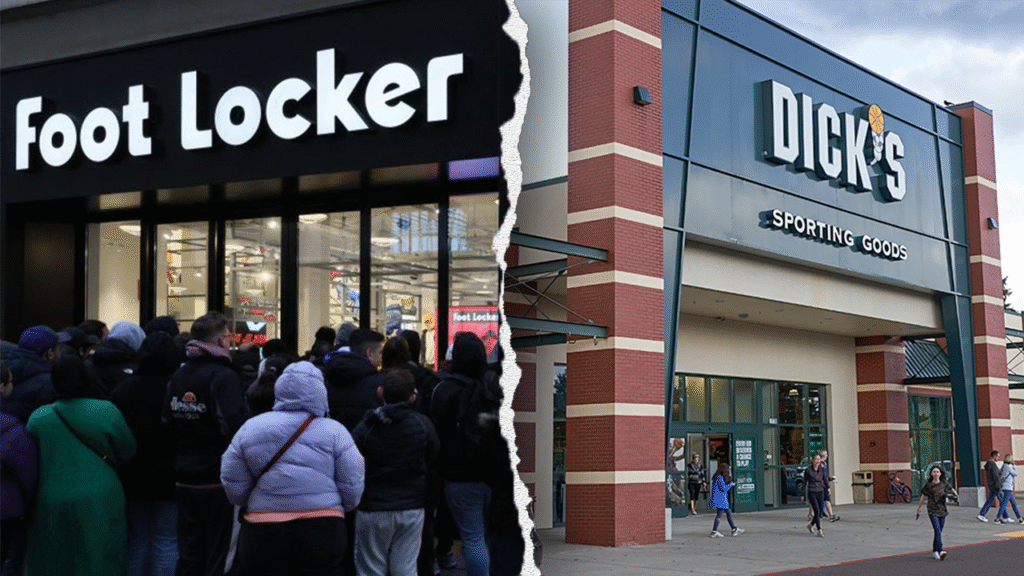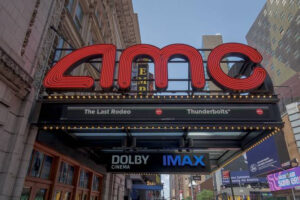In one of the most consequential retail mergers of the decade, Dick’s Sporting Goods announced it will acquire rival Foot Locker for $2.4 billion in a bold bid to redefine its future, expand its demographic reach, and gain greater global traction. What at first glance appears to be a merger between two American retail institutions is, in fact, a strategic recalibration—a pivot that acknowledges shifting consumer behavior, the evolving aesthetics of athletic wear, and the increasingly blurred lines between sport, streetwear, and lifestyle.
This union is not just about combining storefronts or increasing inventory. It’s about narrative control: over Nike’s shelf space, over the trajectory of sneaker culture, and over who gets to outfit the next generation of athletes and style influencers.
A Tale of Two Customers
Dick’s Sporting Goods and Foot Locker have long operated in parallel universes—serving different customers, under different design codes, and with markedly different identities. Dick’s, founded in 1948 in Binghamton, New York, has historically been the archetype of the all-American sports store. Its aisles are lined with fishing rods, lacrosse sticks, and golf clubs. Its audience? Suburban families, high school teams, weekend warriors, and fitness-first shoppers with a functional bent. Walk into any Dick’s location and you’re greeted not just by gear but by a sensibility: measured, technical, and unpretentious.
Foot Locker, on the other hand, wears the urban edge like a uniform. Since its early days, it has capitalized on sneaker culture, youth markets, and the mythos of hip-hop and basketball. Its employees in referee stripes became a visual shorthand for what was cool, what was fresh, and what was worth waiting in line for. While Dick’s sells the sport, Foot Locker sells the story. One deals in performance; the other in prestige.
So why bring them together now?
Strategic Consolidation in the Era of Identity-Driven Retail
The answer lies in the changing face of retail. Athletic brands are no longer confined to the track, the field, or the court. They’ve entered boardrooms, runways, and social media feeds. Performance gear is now lifestyle gear. Brands like Nike, Adidas, and New Balance have become cultural signifiers as much as athletic staples. And this convergence has created an arms race—not for better products, but for better proximity to the customer who sees them as an extension of their identity.
Dick’s acquisition of Foot Locker is not merely a financial maneuver. It’s a strategic shift—a public admission that in order to survive, Dick’s must court the cool, win the streets, and tap into the style codes that Foot Locker has long understood. UBS analysts project that Nike products alone could account for 35% of Dick’s total sales once the deal is finalized. But beyond the numbers is something more abstract: cultural access.
Foot Locker grants Dick’s that access. It opens a channel to younger, more diverse, more globally-aware customers. It provides a passport to new markets—especially since Foot Locker already operates in 20 countries, while Dick’s remains domestically anchored. And perhaps most crucially, it positions Dick’s as a player not only in sports but in the aspirational economy of lifestyle.
The Global Stage: Beyond Malls and Across Borders
One of the deal’s most overlooked assets is Foot Locker’s international reach. With over 2,400 stores, many of which are no longer confined to the declining American mall, Foot Locker has been slowly—but effectively—building a global footprint. While its U.S. operations have faced turbulence, particularly amid changing mall traffic patterns and supply chain tariffs, its stores abroad have demonstrated resilience and adaptability.
Dick’s, in contrast, has long been criticized for its domestic tunnel vision. While its in-store experience remains strong and its ecommerce has improved, it has yet to truly globalize. By acquiring Foot Locker, Dick’s inherits not just locations, but playbooks for how to operate in complex international markets. From navigating European licensing laws to understanding Middle Eastern branding sensitivities, this is more than expansion—it’s onboarding an entire infrastructure.
With this acquisition, Dick’s can now speak multiple retail dialects: the language of American varsity sports and the idioms of European sneaker boutiques. It can become both outfitter and influencer. And with Nike still consolidating its own direct-to-consumer channels, having a robust and culturally relevant retail arm is more critical than ever.
Market Shockwaves: Wall Street Responds
Investor reactions to the news have been sharply divided. Despite Dick’s recent strong performance—its stock reached all-time highs earlier this year—shares tumbled 15% following the acquisition announcement. The immediate market response suggests uncertainty about integration, synergies, and potential regulatory hurdles.
Foot Locker, meanwhile, saw its stock rocket by 80% in a single day. The sharp rise was fueled less by enthusiasm and more by relief. For months, the company had been viewed as a vulnerable target—its share price had dropped 41% in 2025 due to fears over U.S.-China tariffs and sagging mall traffic. Dick’s acquisition was the lifeline Foot Locker’s investors had hoped for.
Still, some analysts are cautioning against euphoria. Mergers of this scale often come with operational hiccups, cultural clashes, and customer confusion. Will the Foot Locker name remain sacrosanct, or will Dick’s attempt to rebrand and risk alienating loyalists? Will Nike remain equally committed to both banners? Will regulatory bodies scrutinize the deal under antitrust lenses?
Dick’s CEO Lauren Hobart doesn’t seem worried. “We’re not expecting any regulatory concerns,” she stated, referring to the deal as a “strategic alignment rather than a consolidation.” But with both companies commanding large portions of the U.S. athletic retail market, the Federal Trade Commission may take a closer look.
Branding and the Battle for the Checkout Counter
One of the subtler implications of the deal is how it reorients the power dynamic between retailers and suppliers—especially Nike. In recent years, Nike has aggressively pursued a direct-to-consumer strategy, cutting ties with many third-party retailers and scaling up its own digital platforms. It has trimmed wholesale partners in search of margin control and better brand cohesion.
But Dick’s and Foot Locker have remained on Nike’s inner circle—key distributors with strong sell-through performance. Combined, they represent an indispensable physical retail force. This new scale could provide leverage. It means bigger orders, better exclusives, and potentially, more say in co-branded campaigns. If executed right, Dick’s-Foot Locker could rival Nike’s own storefronts in brand presentation.
Moreover, this positions Dick’s as a central player in shaping the future of in-store experience. Think elevated sneaker boutiques within Dick’s megastores, youth-oriented pop-ups inspired by Foot Locker’s House of Hoops, or digitally integrated loyalty programs that unify the customer journey across both banners. It’s not hard to imagine a future where you buy a LeBron signature shoe at Foot Locker, redeem a Nike+ reward at Dick’s, and have both linked in a unified app ecosystem.
Culture, Identity, and the Future of Retail
Ultimately, this acquisition is about identity. Not just for the companies involved, but for the millions of customers they serve. In a retail landscape that’s increasingly fragmented and saturated with options, the brands that win are the ones that help customers feel seen—athletically, stylistically, aspirationally.
Dick’s wants to be more than a place where you buy your child’s first baseball glove. It wants to be the curator of what’s next. It wants to be at the center of gym culture, skate culture, shoe culture, and even street culture. By acquiring Foot Locker, it’s making a declaration: the future of sporting goods is not merely functional—it’s expressive, intersectional, and global.
The risks are real. Culture can’t be bought overnight. Demographic shifts take time. And brand loyalty, especially in the youth market, is notoriously fickle. But the ambition is clear.
In acquiring Foot Locker, Dick’s isn’t just buying stores. It’s buying time, access, and a second chance to become culturally relevant before the next wave of retail reinvention arrives.
Flow
Either this merger becomes a textbook success or a cautionary tale remains to be seen. There’s plenty to be excited about—the possibility of a more global Dick’s, the revitalization of Foot Locker, and the promise of a more unified retail experience for customers straddling sports and streetwear.
But integration will be the test. The brand DNA of these two giants couldn’t be more different. One is built on team sports and heritage. The other on hype drops and heat maps. Melding those into a seamless experience will require more than capital—it will require creativity, patience, and vision.
Still, if Dick’s can pull it off, it won’t just own a larger piece of the retail pie. It will own the narrative that matters most: that sport and style are no longer separate spheres, but two halves of the same cultural heartbeat. And in that game, the scoreboard is just getting started.
No comments yet.







